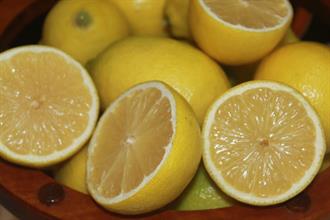
Although by far the greatest use of citrus is as fresh fruits and juice drinks, there are many other ways citrus can be of value. Each type of fruit has its own particular uses.
Sour oranges lend themselves very well to marmalade. In fact, nothing quite compares to marmalade made from these fruits. It is also used in some dishes to flavour meat or fish. The oil is used to flavour a range of foods from chewing gum to ice cream, as well as beverages such as liqueurs and soft drinks. Being more aromatic than the sweet orange, sour orange is also sought after in the perfume industry. Neroli oil which is distilled from flower parts is widely used, as too is orange oil absolute derived through solvent extraction. Pitigrain oil form Bergamot Orange is also highly valued for it scent.
In traditional medicine the sour orange has been used in decoctions, infusions and syrups to soothe a variety of complaints. Like most citrus, the nectar from its flowers makes an attractive honey. Even the timber has been used in fine woodwork and cabinetry due to its dense structure and pale colouring.
Sweet oranges whilst being wonderful eaten fresh can also be given other uses. They are the constituent in orange oil, the essential oil used in aromatherapy. The fragrance is said to be uplifting in terms of mood. Orange oil can also be added to other things like cleaning products and oil diffusers to make rooms smell fresher. The oil of sweet orange has also been used in traditional medicines to relive symptoms of colds, flu, stress and sore gums, as well as flatulence and digestive complaints. The peel is even used by some gardeners to deter slugs and snails.
Mandarin oranges are eaten fresh but they are also the best type for canning. They are suited to adding to a range of culinary dishes like salads and desserts as well as main dishes. Zest of the peel may be used in baking, sweets, and cooking or added to drinks. In Chinese medicine the rind has been used as a digestive aid and to get rid of phlegm.
Lemons have found their way into many culinary dishes and foods. In particular it may be squeezed fresh onto fish dishes and salads or used in marinades and dressings. It is also used in baking, such as lemon meringue, jams like lemon curd, or on pancakes with sugar. Lemon is also the key ingredient in drinks like lemonade and some cocktails. The zest of lemon is also used as flavouring.
Outside of cooking, lemons are used in cleaning products and deodorisers as well as stain removers. The oil is also popular in aromatherapy to lift mood. In Ayurvedic medicine it has been used for its antibacterial properties. It is also often an ingredient in throat pastilles and cold and flu remedies such as hot lemon drinks.
Limes have a sharp flavour making them popular in cooking. The zest is often used in spicy dishes like Mexican and Asian cuisine. It is also used in lime pickle and chutneys served with curries. Like lemons, lime juice is used in soft drinks such as limeade and as a cocktail ingredient. Essential oils extracted from limes are used in perfumery and aromatherapy.